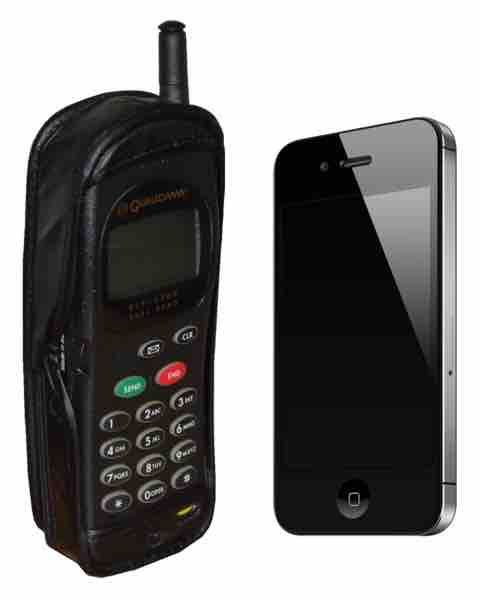Wireless communication is the transfer of information between two or more points that are not connected by an electrical conductor. The term is commonly used in the telecommunications industry to refer to telecommunications systems (e.g., radio transmitters and receivers, remote controls, etc.) that use some form of energy (e.g., radio waves, acoustic energy, etc.) to transfer information without the use of wires. Information is transferred in this manner over both short and long distances. Wireless operations permit services, such as long-range communications, that are otherwise impossible (or impractical) to implement with the use of wires.
The most common wireless technologies use electromagnetic wireless telecommunications, such as radio or infra-red signals. With infra-red waves, distances are short (such as a few meters for television remote control) while radio waves can reach as far as thousands or even millions of kilometers for deep-space radio communications. It encompasses various types of fixed, mobile, and portable applications, including two-way radios, cellular telephones, personal digital assistants (PDAs), and wireless networking. Other examples of applications of radio wireless technology include GPS units, garage door openers, wireless computer mice, keyboards and headsets, headphones, radio receivers, satellite television, broadcast television, and cordless telephones. Less common methods of achieving wireless communications include the use of light, sound, magnetic, or electric fields.
One of the best-known examples of wireless technology is the mobile (or cellular) phone, with more than 4.6 billion mobile cellular subscriptions worldwide as of the end of 2010 (examples of such phones are shown in ). These wireless devices use radio waves to enable their users to make phone calls from many locations worldwide. They can be used within range of the mobile telephone sites that house the necessary equipment to transmit and receive the radio signals these devices emit. Wireless data communications are also an essential component of mobile computing. The various available technologies differ in local availability, coverage range, and performance. In some circumstances, users must be able to employ multiple connection types and switch between them.

Two cellular phones
The Qualcomm QCP-2700, a mid-1990s candybar style phone, and an iPhone 4S, a current production smartphone.
To simplify the experience for the user, connection manager software is available, or a mobile VPN can be utilized to handle the multiple connections as a secure, single virtual network. One popular supporting technology is Wi-Fi, a wireless local area network that enables portable computing devices to connect easily to the Internet. Standardized as IEEE 802.11 a,b,g,n, Wi-Fi approaches speeds of some types of wired Ethernet. Wi-Fi has become the de facto standard for access in private homes, within offices, and at public hotspots. Some businesses charge customers a monthly fee for the service, while others offer it for free in an effort to increase sales of their goods.
Cellular data service offers coverage within a range of 10-15 miles from the nearest cell site. Speeds have increased as technologies have evolved, from earlier technologies such as GSM, CDMA and GPRS, to 3G networks such as W-CDMA, EDGE or CDMA2000. Mobile Satellite Communications may be used where other wireless connections are unavailable, such as in largely rural areas or remote locations. Satellite communications are especially important for transportation, aviation, maritime, and military use.